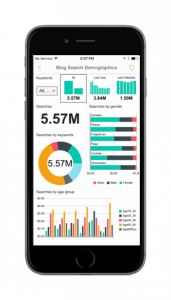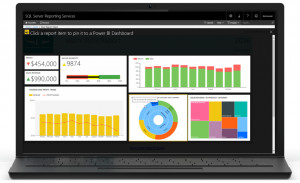Keeping up with the data needs of the business with SQL Server 2016
Leaders are embracing the need to partner with IT to help them gain actionable insights from data. Attesting to this, The Economist recently published a study, “Big data evolution: Forging new corporate capabilities for the long term,” which found that companies “that have a well-defined data strategy are much more likely to say that they financially outperform their competitors — in fact, strategic data managers are four times as [likely] to report that they are substantially ahead of peers.” As a result, “a new kind of partnership has emerged between IT and the business … Not only is this resulting in less dead-weight friction about the goals and approach to data initiatives, but it is also allowing IT to up their game.”
Data’s contribution to business success is ever-expanding. However, unless IT can help transform more data into actionable insights, they are not providing the business with the trusted information they need to uncover new business opportunities and fuel innovation.
Modern BI platform
For IT to remain responsive and agile to the demands they face, a modern Business Intelligence (BI) and analytics platform that provides trusted datasets and metrics that can be easily accessed, consumed and shared by the right people is needed.
SQL Server continues to evolve to let you benefit from data without incurring extra cost from expensive add-ons or facing additional expenses for training IT staff. Because the enhancements to SQL Server 2016 are based on technology that IT is already familiar with, IT can build on existing skill sets to perform modern BI and analytics responsibilities that support a modern data strategy. For example, SQL Server 2016 lets IT transform data into easily understood, trusted data models with user access control to make sure only appropriate users see sensitive data. This means IT can transform complex data from multiple sources into powerful, scalable models that business analysts can easily understand and access by using familiar data analytics and discovery tools such as Excel or Power BI.
But these enhancements are just the beginning. The release of SQL Server 2016 starts the cloud-paced cadence of new capabilities in Microsoft’s comprehensive enterprise-ready BI platform. This approach enables organizations to continuously build on existing investments to create, manage, and consume business insights on-premises and in the cloud. With all this, SQL Server 2016 provides what you need to transform data into actionable insights to help advance your business, including mobile and hybrid BI. To learn more about the modern advances built into SQL Server 2016, read about what you can expect and see the Microsoft BI reporting roadmap here. Upcoming blog posts in this series will dive into the technology that makes all this functionality possible.
Mobile BI
 Accommodating mobile users has become a key requirement of Business Intelligence and analytics efforts. Businesses recognize that the number of other mobile workers will continue to increase as the number of smartphones and mobile devices increases. And with this growth, users expect IT to support their mobile devices as the means to access the information they need to do their jobs whenever and wherever they need to. From business executives meeting with clients, to managers visiting warehouses and individual employees traveling to the airport, all workers are looking to stay connected to their data and business insights through their own devices.
Accommodating mobile users has become a key requirement of Business Intelligence and analytics efforts. Businesses recognize that the number of other mobile workers will continue to increase as the number of smartphones and mobile devices increases. And with this growth, users expect IT to support their mobile devices as the means to access the information they need to do their jobs whenever and wherever they need to. From business executives meeting with clients, to managers visiting warehouses and individual employees traveling to the airport, all workers are looking to stay connected to their data and business insights through their own devices.
SQL Server 2016 delivers built-in mobile BI capabilities for both IT and business users. IT professionals have the tools they need to administer user access and shared data sets in one place. Business users can then access insights in an intuitive, engaging way from their desktop and mobile devices and expect the insights to be optimized for different form factors and major mobile platforms.
When you think about optimizing your data infrastructure and maximizing your IT personnel, mobile BI is an important consideration. Providing BI access to more employees can help you transform the decision-making process and make your organization agile.
Hybrid BI
As your organization transitions to the cloud to benefit from flexibility and scale, you might still have many data sources that reside on-premises. Microsoft BI tools support this trend so that you can transition to the cloud at your pace and take advantage of a hybrid BI solution that will let you continue to benefit from existing on-premises investments. For example, you can pin a Reporting Services paginated report item to a Power BI dashboard so you can view all your information in one place. Or you can access on-premises data from the Power BI service without the need to move the data to the cloud.
Trusted BI platform: Building on your foundation
SQL Server has gained a reputation as a trusted and scalable platform. With that knowledge and the Microsoft data platform infrastructure that organizations depend on today, business and IT can strengthen their data partnership by building on the existing skills and technology and the advances built into SQL Server 2016. Grow your business bottom line by confidently relying on the Microsoft data platform, knowing that it will work with what you have—whether your data and tools reside on-premises or in the cloud—and it will scale with your business as your data and reporting needs grow over time.
Stay tuned to this blog series for in-depth details on SQL Server 2016 analysis, reporting and BI innovations, and click below for further reading and to try SQL Server 2016 CTP3 for yourself.
See the other posts in the SQL Server 2016 blogging series.


